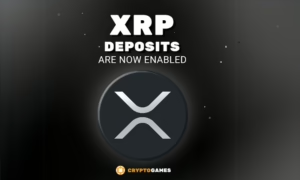Bitfinex Offers Clients Satoshis On Their Bitcoins

The Hong Kong based cryptocurrency exchange that suffered the second worst bitcoin theft in exchange history, is now pushing towards a solution that looks like a bail in but feels like a letdown. The company released an official statement on August 6th, 2016 stating that it will spread the losses from the hack equally among its users. The proposal – or imposition to be more accurate – lacks detail and is clearly not a satisfactory solution for many reasons.
Bitfinex Bail-In Facts
The absence of details in its proposal show the weakness of the bail-in plan implementation. There is no way of knowing how Bitfinex arrived to the loss ratio that it will impose on its customers. The following are the facts that have been established and can be inferred so far from Bitfinex’s calculation:
- Client accounts will lose 36.067% of their funds once they are back online for trading.
- Every account holder will receive a token in exchange for the loss of funds.
- Bitfinex will let its customers redeem the token at some point in the future or it will exchange it for stock in iFinex Inc. – Bitfinex’s parent company.
- There is no information disclosing the dividends that iFinex will pay per share if clients decide to acquire stock.
- There is no information regarding the value of iFinex shares to see if clients will get a fair deal.
- There are no guarantees that Bitfinex will be liquid enough to redeem those tokens in the future, especially if there is a massive drive to redeem.
- There are no guarantees that Bitfinex will be able to survive this attack and grow, given that its image has been tarnished.
Bitfinex Offers Satoshis on the Bitcoin
These facts point to a troubling future for clients who will now have to take a 36% ‘hacking tax’ on their holdings. It is likely that at least some of them, in the brightest of scenarios, will never recover the full value of the funds lost. This is especially the case with the largest account holders, who will by definition, bear the brunt of this bail-in attempt.
Moreover, given the volatility in cryptocurrency markets, a given amount of bitcoin, Ether, Dash or Litecoin now, will most definitely hold a different value in the future. So how is Bitfinex going to compensate its clients when it does so eventually, based on the value of what they lost on the eve of the hack or based on some other rate? Once again, there are still no answers available to the public.
A Roadmap for Recovery from Bitcoin Theft
Given that the standards out there are low and that no authority will be able to intervene in order to shape a fairer deal – yes, when a financial institution dealing in bitcoin, takes on the characteristics of a traditional broker, some kind of regulation must follow to protect clients from these kinds of excesses – Bitfinex clients are at the mercy of the company that holds their funds. Its logic dictates that if they had to declare bankruptcy because of bitcoin theft, in any case the account holders would have to take a similar hit, so that is what they will be offered.
That is not the mindset needed to bring the exchange back on its feet, but it is still better than what Mt Gox did. If by some strike of luck this succeeds and clients get at least a considerable amount of Satoshis on their bitcoin, then other exchanges might feel tempted to follow the roadmap. In the meantime we will be waiting for more details on how Bitfinex clients will be compensated, in the hope that the exchange will not leave the public in the dark.
Click here to read the official press releases from Bitfinex.









